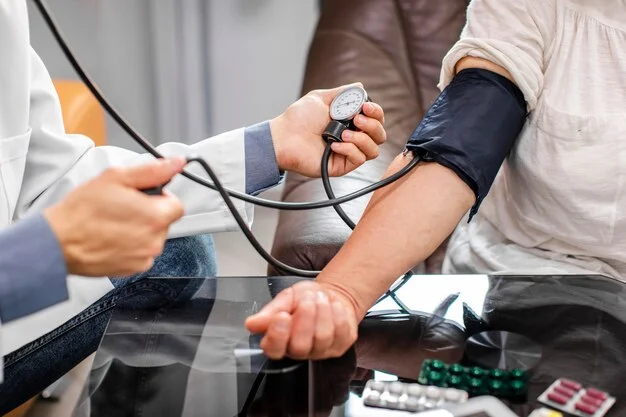How to Help Someone with a Panic Attack
Introduction to Panic Attack
Panic attacks can be intense, overwhelming experiences, not just for those enduring them but also for those witnessing them in loved ones. Understanding how to support someone during such a vulnerable time effectively is crucial. This blog aims to equip you with the knowledge and skills needed to provide meaningful assistance during a panic attack, emphasizing the significance of empathy, quick thinking, and effective strategies. Whether you’re helping a friend, family member, or stranger, your support can make a significant difference in their recovery and overall well-being.
Understanding Panic Attacks

Definition and Symptoms
A panic attack is an abrupt surge of intense fear or discomfort that peaks within minutes. It can occur unexpectedly or be triggered by specific situations. Symptoms can vary widely among individuals but typically include a rapid heartbeat, sweating, trembling, shortness of breath, a feeling of choking, chest pain, nausea, dizziness, and a fear of losing control or dying. Panic attacks can be so severe that individuals might believe they’re having a heart attack or a medical emergency.
Panic Attack vs. Anxiety Attack
While often used interchangeably, panic attacks and anxiety attacks have distinct differences. Panic attacks are sudden and intense, often without an obvious trigger, and can include physical symptoms like chest pain and heart palpitations. Anxiety attacks, on the other hand, usually develop gradually as a response to a perceived threat or stressor and are less intense than panic attacks. Understanding these differences is crucial in providing appropriate support and intervention.

Common Triggers and Causes
Triggers for panic attacks can vary, including stressful life situations, certain changes, or even physical conditions. However, they can also occur without any apparent reason. Factors like genetics, major stress, the temperament that is more sensitive to stress or prone to negative emotions, and certain changes in the way parts of the brain function may play a role in panic attacks. Recognizing these triggers and underlying causes can be helpful in managing and supporting someone with panic disorder.
Recognizing the Signs

Physical and Psychological Signs of a Panic Attack
Recognizing the signs of a panic attack in someone can be the first step in providing help. Physical symptoms often include rapid heartbeat, sweating, trembling, and shortness of breath. Psychological signs might involve a sudden fear of dying, losing control, or a sense of detachment from reality. It’s essential to be observant and recognize these signs early to provide immediate support.
Importance of Early Recognition
Early recognition of a panic attack can allow for quicker intervention, helping to calm the person down and potentially lessen the attack’s intensity. Knowing the signs also prepares you to respond appropriately, ensuring that the individual doesn’t feel alone during such a vulnerable moment.
Immediate Support Strategies

Calming Techniques for Panic Attacks
When someone is experiencing a panic attack, your goal is to help them reduce the intensity of their symptoms. Encourage them to focus on their breathing by taking slow, deep breaths, which can help manage hyperventilation and calm their nervous system. Simple mindfulness exercises, like guiding them to focus on objects around them or on the sensations in their feet or hands, can also help divert their attention from the panic and ground them in the present.
Breathing Exercises
Breathing exercises are a cornerstone of calming someone experiencing a panic attack. Techniques such as the 4-7-8 method, where the person breathes in for 4 seconds, holds their breath for 7 seconds and exhales for 8 seconds, can be particularly effective. These exercises help regulate breathing and can have a calming effect on the nervous system.
Mindfulness Practices
Mindfulness practices during a panic attack involve bringing the person’s attention to the present, helping them detach from their overwhelming feelings. Guiding them to notice details in their immediate environment or engage in a simple meditation can provide significant relief. Mindfulness can help reduce the intensity of the panic attack and bring a sense of control back to the individual.
Communicating Supportively
Effective communication is key when helping someone through a panic attack. It’s not just about what you do; it’s equally about what you say and how you say it. Here are some dos and don’ts to guide your interactions.
Do’s of Supportive Communication
- Stay Calm: Your calm demeanor can be contagious. By staying composed, you provide a sense of stability and safety.
- Use Reassuring Language: Let them know you’re there with them, they’re safe, and that the panic attack will pass. Phrases like “You’re not alone,” and “I’m here for you,” can be very comforting.
- Encourage Slow Breathing: Gently guide them to take slow, deep breaths, which can help reduce the intensity of the panic attack.
- Listen Actively: Sometimes, just knowing someone is there to listen without judgment can be incredibly reassuring. Show that you’re listening by nodding and making eye contact.
Don’ts of Supportive Communication
- Don’t Dismiss Their Feelings: Avoid phrases like “Just relax” or “There’s nothing to worry about.” These can seem dismissive and invalidate their experience.
- Don’t Demand Immediate Calm: Pressuring someone to calm down immediately can increase their stress. Allow them the space to work through their feelings at their own pace.
- Don’t Make Assumptions: Avoid assuming you know what they need. Instead, ask how you can help or what they need from you in that moment.
How to Calm Someone Down from a Panic Attack
Creating a supportive environment is crucial. In addition to using calming techniques and supportive communication, being physically present, offering a hand to hold, or maintaining a comfortable silence can be powerful. Each person is different, so it’s important to tailor your approach to what they find most comforting.
Long-Term Support and Prevention
Supporting someone with panic disorder goes beyond managing individual panic attacks. It involves being part of a broader support system that encourages management and prevention strategies.
Supporting Someone with Panic Disorder
- Educate Yourself: Understanding panic disorder can make you a more empathetic and effective supporter. Learn about the condition, its triggers, and its impact.
- Encourage Professional Help: Gently suggest seeking professional advice from a psychologist or psychiatrist. Professional guidance is crucial in managing panic disorder effectively.
- Be Patient and Understanding: Recovery and management are processes that take time. Showing patience and understanding reinforces your support.
Strategies for Preventing Panic Attacks
- Encourage a Healthy Lifestyle: Regular exercise, a balanced diet, and sufficient sleep can significantly reduce the frequency and intensity of panic attacks.
- Promote Stress Management Techniques: Yoga, meditation, and mindfulness can help manage stress levels, potentially reducing the likelihood of panic attacks.
- Support Them in Facing Fears: Avoidance can worsen panic disorder. Encourage gradual exposure to feared situations with professional guidance, which can be effective in reducing panic attacks over time.
Lifestyle Changes and Stress Management
Adopting a healthier lifestyle and managing stress can have profound effects on the frequency and intensity of panic attacks. Encourage participation in activities that reduce stress, such as hobbies, socializing, and relaxation techniques. Your support can be instrumental in motivating them to make these changes.
FAQs
What Causes a Panic Attack?
Panic attacks are caused by a combination of genetic, psychological, and environmental factors. Stressful life events, underlying health conditions, and certain personality types are more susceptible to panic attacks.
How Long Do Panic Attacks Last?
Panic attacks typically last from a few minutes to half an hour. However, the aftereffects can linger, leaving the person feeling fatigued or stressed for the rest of the day.
Can Panic Attacks Be Prevented?
While not all panic attacks can be prevented, managing stress, practicing relaxation techniques, and avoiding known triggers can reduce their frequency and severity.
Is It Helpful to Remind Someone That It’s Just a Panic Attack?
While it’s important to reassure someone that they’re not in physical danger, focus on validating their experience and offering support rather than minimizing their feelings.
How Can I Learn More About Helping Someone With Panic Attacks?
Seek out resources from mental health organizations, read books on anxiety and panic disorders, and consider attending workshops or support groups to better understand how to support someone with panic attacks.
Conclusion
Supporting someone during a panic attack requires patience, understanding, and a willingness to learn. By recognizing the signs, communicating supportively, and employing calming techniques, you can provide significant relief during these intense moments. Long-term support through lifestyle changes and professional help can further assist in managing panic disorder. Remember, your support can make a world of difference to someone facing the challenges of panic attacks. Encourage continuous learning and adaptation of strategies to ensure the most effective support for your loved ones.







